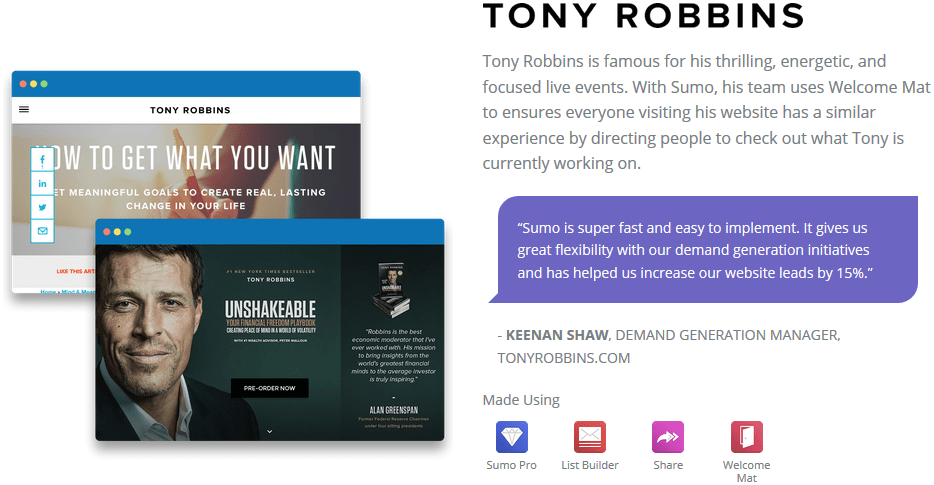When was the last time you checked out customer reviews before purchasing a product on Amazon? Or what about Tripadvisor, have you ever used it to determine whether a hotel or restaurant is worth your time and money? It’s not uncommon to do so. In fact, nearly 90% of customers read online reviews before visiting a business.
Nowadays customers rely on reviews for some of their most significant life choices. So, what can YOU do to leverage the power of customer reviews to make your business flourish?
In this article, you’ll learn everything you need to know to turn your customers into your salespeople, from the importance of brand advocacy, the secret behind getting customer reviews, to the power of customer experience.
Getting customer reviews is vital for your business

Before the rise of the internet, customers usually ask their friends and family for recommendations. Nowadays, this habit is still the same, but the channel they use is different.
Most customers turn to fellow shoppers and make purchasing decisions based on their online reviews, due to a growing skepticism in traditional advertising.
As a result, 93% of customers will read reviews of local businesses to determine their quality. But if you think you can only rely on positive reviews, then you are wrong. Because 95% of customers get suspicious of a rating if there are no negative reviews.
The importance of customer reviews cannot be overstated. Both positive and negative customer reviews influence the way we sell. Here’s why:
- 72% of customers won’t take any buying actions until they’ve read reviews.
- For every one-star increase that a business gets on Yelp, they see a 5-9% increase in revenue.
- 54% of consumers visit a local business website after reading a positive review.
Improve the customer experience to skyrocket your reviews
In order to skyrocket the number of relevant reviews and testimonials, you first should understand what a good customer experience looks like to your target customers and how to create it.
Customer experience is how your (potential) customers interact with your brand at every touchpoint of the buyer’s journey. Here are two customer experience examples:
- You are mesmerized by the performance of the product?
- The customer service helped solve the problem with ease and comfort.
The better the customer experience, the more your brand advocacy will grow, as customers tend to share their experiences more often after experiencing a service or product. These are your free testimonials shared on their social media.
Customer reviews VS. Testimonials

Did you know that customer reviews and testimonials are not the same? While they both give us details about customers’ experiences with a brand or company, testimonials are most likely to be positive. On the other hand, customer reviews can be good or bad because the company has no direct involvement in them.
What is Brand Advocacy?

Brand advocacy is a term used to describe actions taken by people who love your brand and continuously support your organization by promoting products and services to new customers and prospects. The people who carry these actions are so-called brand advocates. They promote your product or service to people both inside and outside the business. Here’s the power of brand advocates:
Boost content creation and online visibility
Without knowing, most people work as marketers for an organization when they share their personal experiences of your brand on social media. These brand advocates offer brands free positive online visibility without any direct influence.
Gives you access to new markets and audiences
Did you know that not knowing your market is 1 of the 5 top reasons why most businesses fail? To overcome this issue, your brand advocates help you find new audiences who may not be in the target category yet.
Who are your brand advocates?
Did you know that brand advocates are 50% more likely to influence a purchase? An unforgettable customer experience results in more sharing from the customer by word of mouth or digital media. That’s why building your brand advocacy is extremely important.
Your brand advocate is someone who praises your brand through word-of-mouth marketing. Employees, customers, or influencers are examples of brand advocates you can use.
Customer Brand Advocacy

Social media is a powerful platform on which customer advocacy can be carried out and spread. As of 2022, there are approximately 3.96B social media users around the world. That’s more than half of the world population! In the coming years, this number is projected to increase even more.
Customers and influencers are able to engage and share their experiences with your brand on social media. In fact, influencer marketing is likely to play a larger role in 2023. 61% of consumers trust influencers’ recommendations–more than the 38% who trust branded (and often biased) social media content. Winning the heart of customers and influencers within your target niche is crucial to building powerful brand advocacy and brand value.
Employee brand advocacy

Most businesses forget that their employees are their brand advocates too. If the employees tell the world about the amazing company they work for and the great products it has, then sales and customer support will benefit.
Creating and nurturing a healthy and supportive company culture will create exceptional internal brand advocacy. Businesses with a good company culture grow their revenue by at least 400% compared to those that don’t, according to a major study conducted over an eleven-year period.
So, what can you do to improve your employee brand advocacy and company culture?
It is important to keep your employees motivated. Modern-day professionals want to know why they come to work every day. They are not just there for the paycheck, as hefty as it may be. Employees are driven by values. Validation, and of course, a variety of other factors that shape your company culture. Therefore, keeping your employees motivated require a mindful approach and effort from the top down to create an inspirational and comfortable environment.
Adding a company intranet is one way to grow brand advocacy, because your intranet can contain brand advocacy apps to encourage employees to like and share content from inside and outside the company.
How to transform negative reviews into brand advocates
Have you ever received a negative review? Congratulations, that’s amazing! It might seem unbelievable, but having too many positive reviews can be a red flag to customers. Because most customers think that that’s too good to be true.
So in order to benefit from negative reviews, you must handle them well. The key is to respond fast and honestly. 45% of customers say they’re more likely to visit a business if they honestly and professionally handle negative reviews.
It is crucial to timely respond and fix the things customers complain about. This simple but effective solution will contribute to more sales and greater customer satisfaction.

Use engagement marketing as your leverage
Engagement marketing is your secret sauce to skyrocket your customer interactions and build brand loyalty. Here are 3 channels you can use today:
- Email marketing
- Content marketing
- Social media marketing
To leverage the power of your engagement marketing, your aim should be to create interactions with people. These channels will help you reach your goals because they build a personal rapport between your brand and your customers.
For example, if you make a well-curated and targeted social marketing strategy, you can create content to establish yourself as an authority, build trust, and educate your audience.
Get a jump start on your next engagement marketing campaign by following this step-by-step process:
- Define your marketing engagement objectives. Without a goal, you can’t make a successful strategy. That’s why you must describe what you want to achieve with it before you start your research.
- Identify your target audience and get inside their mind. Define what problems they currently face, what their dreams are, and what channels they use.
- Create engaging and compelling content, based on the needs of your audience and future social media trends. Try to differentiate between educational, promotional, and branding content to get the best results.
- Start conversations with your (potential) customers. Respond to their comments and create content that sparks their interest and conversation. Be real and authentic in the conversations to get the best results.
- Optimize your landing pages to transform viewers into paying customers. The more accessible and user-friendly your platform ares, the more traffic you’ll get. That’s why your landing pages must be optimized to get the highest conversion rate out of your traffic.
- To maximize your results, you must review your strategy regularly. Use marketing automation and CRM tools to save time and scale your campaign.
This is why your customer reviews perfect your brand strategy
Customer reviews are not just your number one salesperson. It’s an irreplaceable part of your brand strategy, because it allows you to show off your product effortlessly and get potential customers interested in your brand.
Leverage this power in your engagement marketing strategy, so you’ll be able to develop a constant flow of high-valuable customer reviews.
If you want to take this a step further and create a seamless digital experience your audience will remember and love, check out this proven and tested method to learn how to transform your brand image together with a team of brand and design experts.




